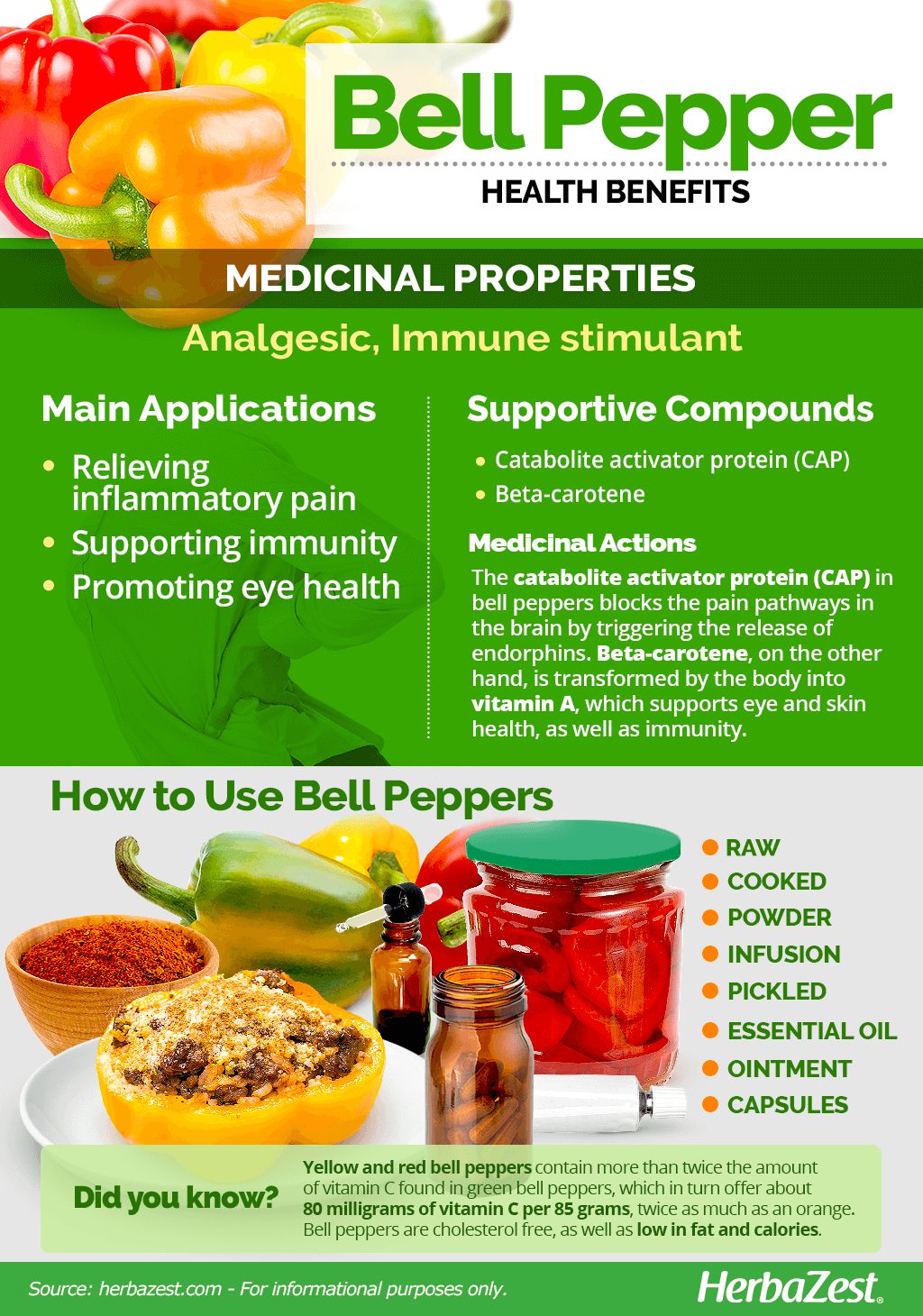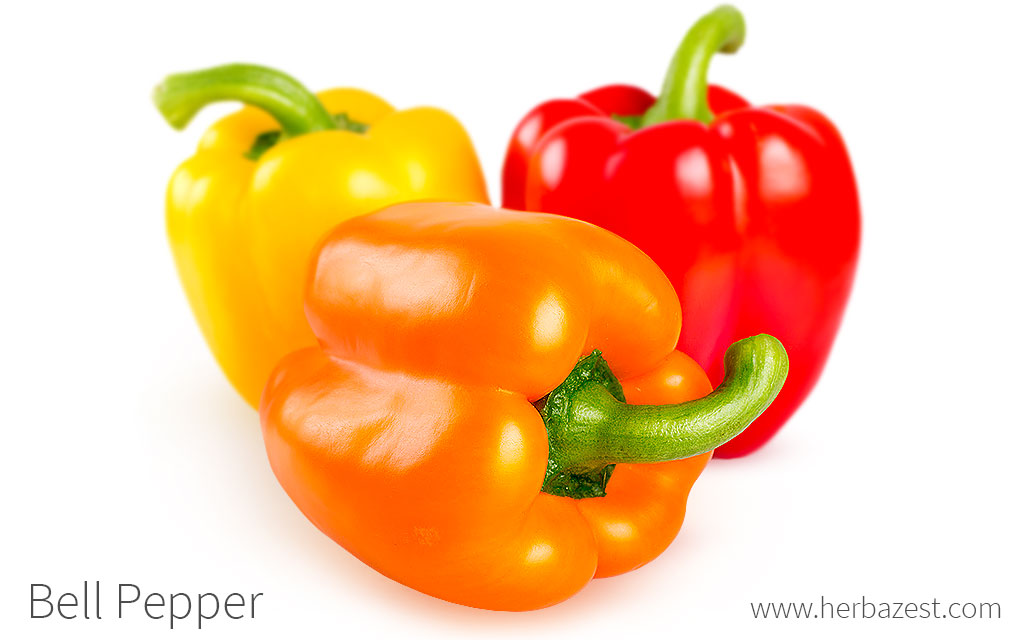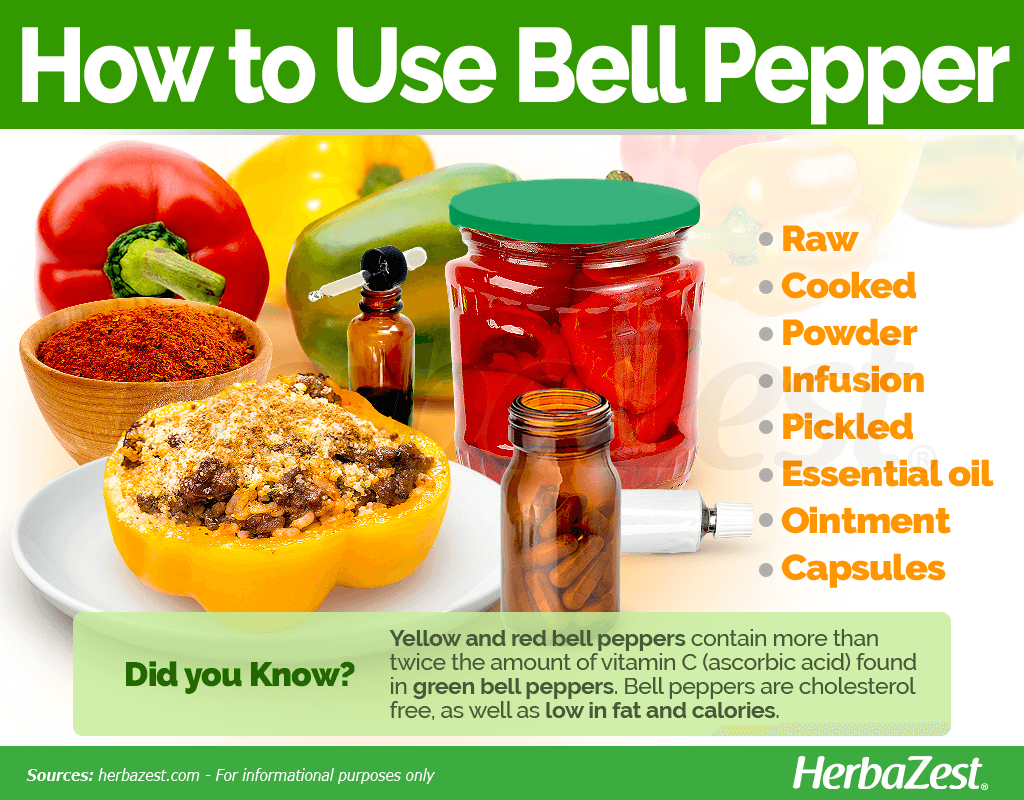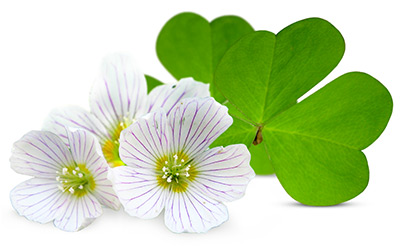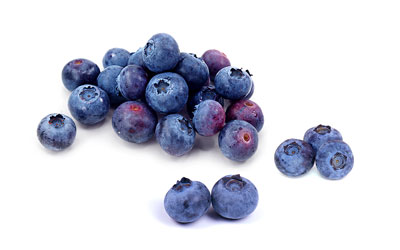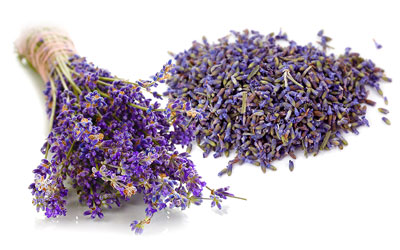Enjoyed around the world, bell peppers are classified as a fruit botanically, but considered a vegetable in a culinary context. They were first grown in South America thousands of years ago and were introduced to Europe and the rest of the globe by Spanish and Portuguese explorers in the 15th century. Today, they remain a highly-valued source of nutrients, but also boast a range of specific medicinal properties.
Bell Pepper Medicinal Properties
- Medicinal action Analgesic, Immunostimulant
- Key constituents Catabolite activator protein, Beta-carotene
- Ways to use Capsules, Hot infusions/tisanes, Food, Freshly ground, Powder, Ointment, Essential oil, Dried
- Medicinal rating (3) Reasonably useful plant
- Safety ranking Safe
Health Benefits of Bell Peppers
As well as a popular ingredient for cooking, some of the ancient cultures of the Americas used bell peppers for therapeutic purposes. Scientific investigations have been carried out to corroborate those ancient uses and discover bell peppers' mechanisms of action in order to find modern medicinal applications. Some medicinal benefits of bell peppers are:
Relieving inflammatory pain. Bell peppers can offer relief from muscle pain or joint pain caused by arthritis if used topically.
Supporting immunity. Just half of a bell pepper provides 100% of the vitamin C the body requires each day, which helps the body fen off colds and absorb iron.
Promoting eye health. Studies have shown that peppers contain a substance that supports general eye health, helping prevent the development of cataracts.
How It Works
Unlike other Capsicum species, bell peppers don't produce capsaicin, the mild irritant compound that causes a burning sensation and also has anti-inflammatory properties. That's why they are often called “sweet peppers.” However, bell peppers still have an analgesic action.1 This is due to a protein known as CAP (catabolite activator protein) that influences neurotransmitters in the brain, blocking the pain pathways and triggering the release of endorphins.
Beta-carotene, which is transformed by the body into vitamin A, is a compound found in all kinds of peppers, and it is also responsible for their bright colors. Vitamin A is needed to support vision as well as for general immunity and skin health.2
Other herbs with analgesic properties are devil's claw and cloves, while echinacea and lemon share the same immune stimulant benefits.
Bell Pepper Side Effects
The bell pepper is generally considered safe for ingestion and topical use. It is recommended to consume it as part of a balanced diet. However, advice should be sought from a health professional before a regular course of supplements is started.
Bell Pepper Cautions
Although it is not a common occurrence, members of Solanaceae, or the nightshade family which includes bell peppers, can trigger allergic reactions in some sensitive individuals. The ingestion or inhalation of any kind of pepper as well as close contact with them can cause a variety of symptoms, from redness, itching, and swelling to skin rashes, sneezing, asthma, and even anaphylactic shock in some cases.

Bell Pepper Nutrition
Bell peppers are an excellent source of vitamin C (ascorbic acid), which is necessary for growth and tissue repair as well as for the formation of collagen, a protein used for skin regeneration and the creation of blood vessels. Vitamin C is also needed for cartilage, bones, and teeth.
Yellow and red bell peppers contain 128 mg of vitamin C per 100 grams, nearly twice the amount found in green bell peppers, which offer about 80 mg, way above the average 53 mg provided by oranges.
Additionally, red bell peppers are a good source of vitamin A (as carotenoids), which is important for the skin, eye health, and the central nervous system.
100 grams of red bell peppers provide only 26 calories as well as 8% of the daily value for dietary fiber.
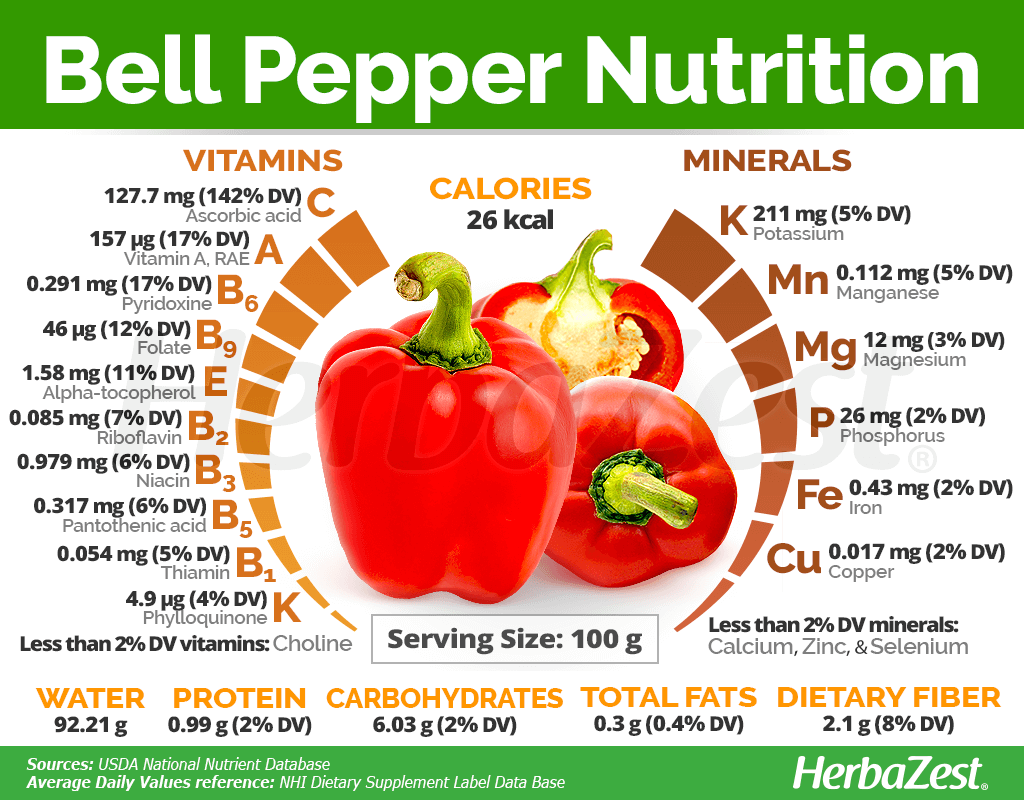
How to Consume Bell Pepper
- Edible parts Fruit, Leaves, Stem, Oil
- Edible uses Flavoring, Coloring, Condiment, Oil
- Taste Sweet
Bell peppers are commonly used for culinary purposes. They can be bought in various colors and sizes, fresh or in powder, which can make meals more interesting by bringing a sweet taste and a crunchy texture. However, bell peppers' health benefits can also be obtained form medicinal preparations.
Natural Forms
Raw. Bell peppers retain more nutrients when eaten raw in salads, cold soups, or as a garnish for main dishes.
Cooked. Whether roasted or sautéed, bell peppers can be added to a number of dishes as well as to salsas or chutneys in order to prolong their shelf life.
Powder. A specific variety of red bell peppers is dried and ground into a powder called paprika, which provides anti-inflammatory benefits and can be used alone or added to various spices mixes.
Infusion. Diced and dried bell pepper fruit can be used in the same fashion as its hot relatives - but without the spicy taste - as a mild anesthetic and relaxant. Dominicans use a decoction of red bell pepper leaves to reduce blood pressure.
Pickled. Bell peppers can be pickled in a water and vinegar solution and eaten on sandwiches, in salads, and more.
Herbal Remedies & Supplements
Essential oil. The essential oil made from sweet peppers is not pungent. It is high in carotenoids and can be used externally to promote healthy skin, hair, and nails.
Ointment. Green and red pepper salves contain high levels of beta-carotene and can be used externally to soothe skin rashes and dryness as well as relieve muscle and joint inflammation.
Capsules. This is a convenient way to consume the vitamins and minerals found in bell peppers. However, they are just a supplement and should not replace the consumption of fresh fruits and vegetables.
Growing
- Life cycle Perennial
- Harvested parts Leaves, Stem, Fruit
- Light requirements Full sun, Partial shade
- Soil Medium (loam), Well-drained
- Soil pH 6.1 – 6.5 (Slightly acidic)
- Growing habitat Temperate climates
- Pre-germination seed treatment None
- Planting time Spring
- Plant spacing average 0.3 m (0.98 ft)
- Growing time 85 - 100 days
- Potential insect pests Aphids
- Potential diseases Anthracnose, Bacterial leaf spot, Bacterial wilt, Fusarium wilt
- Potential animal pests Birds, Chipmunks, Mice, Rabbits
Bell peppers can adapt to different climates, so they are cultivated and consumed around the world. The plant requires some care and attention in order to grow well, but the results are rewarding, especially as it can fruit numerous times if harvested and properly trimmed throughout the season.
Growing Guidelines
Bell peppers thrive best in warm weather - at least 55°F (12°C) at night.
Soil should be well-drained and fertile.
They can be grown from seeds that should be planted in a container on a windowsill, around six to eight weeks before being planted outside.
The position outside should be in full sun - at least six hours per day.
They should be planted around 12 inches (30 cm) apart
A slightly acidic pH of 6.1 - 6.5 is recommended
Calcium and phosphorus supplementation (found in many fertilizers available in gardening shops) is required for bell peppers to thrive.
The fruits are usually ready to be harvested 50 - 90 days after planting.
Detailed information about growing bell peppers can be found in the herb garden section.
Additional Information
- Other uses Dye, Soapmaking
Plant Biology
Bell peppers are a Capsicum annuum cultivar group that lacks39 the pungent taste of their hot relatives. Bell peppers, also known as “sweet peppers,” are grown in large quantities across the globe. It is a small shrub that usually grows to less than 39 inches (1 m) tall and can have various different fruit sizes, colors, and shapes. Other colors that can be cultivated are orange, yellow, and purple. The fruits are averagely four by six inches (10 x 15 cm) and are hollow. The wall of the fruit is around 0.4 inches (1 cm) thick, and there is a membrane inside, which holds a collection of seeds.
Classification
Bell peppers belong to the Solanaceae family, which is sometimes referred to as the nightshade family. Within this family, there are 2,700 species spread over 98 genera, some of them of great economical importance, like potato (Solanum tuberosum), eggplant (Solanum melongena), and tomato (Solanum lycopersicum), as well as less known and exotic species, such as ashwagandha (Withania somnifera), goldenberry (Physalis peruviana), and goji berry (Lycium chinense).
Varieties and Subspecies of Bell Pepper
Within this cultivar group, there are dozens of cultivars of bell pepper that vary in shape, color, flavor, number of lobes, and resistance to disease. For example, 'Allegiance' produces dark green peppers with thick walls, and 'HM 2641' is an extra-large red pepper that thrives in warm weather. Mini-sweet pepper cultivars include such clever names as 'Yes to Yellow,' 'Orange You Sweet,' and 'Right on Red,' among others.
Historical Information
Bell peppers have a long and interesting history. There is evidence to suggest that they were grown and used in cooking in South America as early as 7500 BCE, and some pre-Columbian cultures even used them to create a mild high. They did not arrive to Europe until 1496, when Christopher Columbus made his second journey to the Americas. He returned with the peppers, which quickly became popular and widespread.
In 1937, Albert Szent-Gyorgyi - a Hungarian scientist - won the Nobel Prize for isolating ascorbic acid (vitamin C) from peppers.
Economic Data
Today, China, Turkey, Spain, Romania, Nigeria, and Mexico produce most of the world's bell peppers. In the U.S., consumption of this vegetable has risen from 7.1 pounds (3.2 kg) per capita in 1992 to 8.3 pounds (3.8 kg) per capita in 2002. More peppers are being imported from Canada, Mexico, and Europe to meet this demand.
Popular Beliefs
The Tzotzil people in Mexico use peppers in ceremonies to drive away evil spirits on the occasions of birth and death. When a child is born, pepper is rubbed onto the lips, and at funerals, peppers are burned to release a harsh smoke.
Other Uses
Dye. Bell peppers are bright in color and can be dried, ground, and used in cooking to change the look of other food.
Soap and candle making. Bell peppers' compounds can also be used in the fabrication of soaps and candles.
Bell peppers are highly valued by people worldwide. They are relatively cheap and easy to cultivate, which makes them a popular crop to buy and sell. The vast number of health benefits of this vegetable - and its versatility - solidifies its appeal as an addition to a healthy diet or medicine cabinet in the form of supplements.
Sources
- American Academy of Asthma & Immunology, Food Allergy Symptoms
- Capsicum - The genus Capsicum, 2003
- Center for Nutrition, Diet and Health, Peppers
- Chileplanet, Origins and History of the Chili Pepper
- National Institutes of Health, Vitamin C
- Pakistan Journal of Food Sciences, Antioxidant Potential of Bell Pepper (Capsicum annum L.)-A Review, 2011
- Penn State University, Container Grown Peppers
- Safety of Meat and Processed Meat, p. 274
- The Encyclopedia of Healing Foods, pp. 167 - 168
- University of California, Davis, Bell Pepper
- University of Florida, Common Pepper Cultivars for Florida Production
- University of Kentucky, Bell Peppers
- University of Vermont, Grow Your Own Sweet Peppers
- Kew Royal Botanic Gardens, Capsicum annuum
- Mayo Clinic, Capsaicin (Topical Route)
Footnotes:
- Pakistan journal of pharmaceutical sciences. (2021). Analgesic and anti-inflammatory potential of four varieties of bell pepper (Capsicum annum L.) in rodents. Retrieved August 19, 2022 from: https://pubmed.ncbi.nlm.nih.gov/34799309/
- Antioxidantes. (2015). Bioactive Compounds and Antioxidant Activity in Different Grafted Varieties of Bell Pepper. Retrieved August 19, 2022 from: https://www.ncbi.nlm.nih.gov/pmc/articles/PMC4665466/
